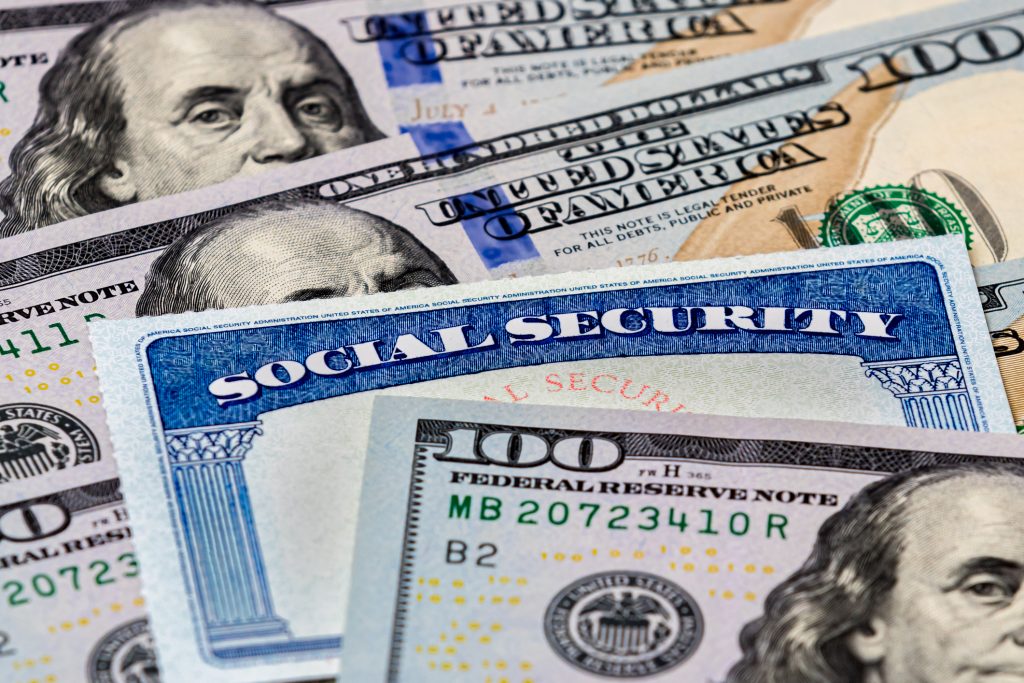The average Social Security retirement benefit was $1,921.56 in September. While that might be a nice supplement to your retirement savings, it’s hardly enough for most retirees to live on. That’s especially true when you consider the rapidly rising costs of healthcare and housing.
But if you earn enough during your career, you could receive a lot more from Social Security when you retire. The maximum possible benefit in 2025 will be $5,108 per month, and that amount will climb every year going forward thanks to the annual cost-of-living adjustment, or COLA, baked into Social Security.
The biggest hurdle to receiving that maximum benefit is earning a high enough salary over the course of your career. Only a tiny percentage of Americans will ever qualify for the maximum benefit. But if you want to become one of them, here’s how much you need to earn.

Image source: Getty Images.
The three factors that determine the size of your Social Security check
Before we get to how much you need to earn to maximize your Social Security benefits, it’s important to understand how the government calculates your retirement check. There are three factors that play a role in the calculation:
- Your earnings history
- When you were born
- When you claim benefits
Once you claim Social Security benefits, the government will take a look at your past wages. It doesn’t just look at what you earned in your last year of employment; it goes back through your entire career. It adjusts every year’s earnings for wage inflation tied to an index from the year you turned 60. Any earnings after age 60 aren’t adjusted.
The Social Security Administration will take your 35 highest adjusted-earnings years and find your average monthly earnings. It then plugs that average into the Social Security benefits formula (which is impacted by when you were born) to determine your primary insurance amount, or PIA. That’s the amount you’ll receive if you apply for benefits the month you reach full retirement age.
Your full retirement age is determined by the year you were born. Those born between 1943 and 1954 reached full retirement age at 66. Your full retirement age increases by two months for each year you were born after 1954 until maxing out at age 67 for anyone born in 1960 or later.
If you claim benefits before your full retirement age, you’ll see a reduction in benefits relative to your PIA. But if you wait beyond your full retirement age, you’ll get more from Social Security for each month you delay up until age 70. Someone born in 1955 has a full retirement age of 66 and two months, and they can collect nearly 31% on top of their PIA by waiting until age 70 to claim.
Here’s the salary you need to get the maximum benefit
Most people pay Social Security taxes on their entire paycheck during their career. But high earners might not pay the tax on every penny they earn. That’s because the Social Security Administration puts a cap on the taxable wages every year.
Any amount earned above that cap won’t incur taxes, but it also won’t count toward your earnings history. That effectively sets the bar for the salary you need to earn in order to qualify for the maximum potential benefit in retirement. If you can consistently earn above that threshold for at least 35 years, you’ll be in line for a very sizable Social Security check.
The table below shows the maximum taxable earnings for each of the last 50 years.
| Year | Earnings | Year | Earnings |
|---|---|---|---|
| 1976 | $15,300 | 2001 | $80,400 |
| 1977 | $16,500 | 2002 | $84,900 |
| 1978 | $17,700 | 2003 | $87,000 |
| 1979 | $22,900 | 2004 | $87,900 |
| 1980 | $25,900 | 2005 | $90,000 |
| 1981 | $29,700 | 2006 | $94,200 |
| 1982 | $32,400 | 2007 | $97,500 |
| 1983 | $35,700 | 2008 | $102,000 |
| 1984 | $37,800 | 2009 | $106,800 |
| 1985 | $39,600 | 2010 | $106,800 |
| 1986 | $42,000 | 2011 | $106,800 |
| 1987 | $43,800 | 2012 | $110,100 |
| 1988 | $45,000 | 2013 | $113,700 |
| 1989 | $48,000 | 2014 | $117,000 |
| 1990 | $51,300 | 2015 | $118,500 |
| 1991 | $53,400 | 2016 | $118,500 |
| 1992 | $55,500 | 2017 | $127,200 |
| 1993 | $57,600 | 2018 | $128,400 |
| 1994 | $60,600 | 2019 | $132,900 |
| 1995 | $61,200 | 2020 | $137,700 |
| 1996 | $62,700 | 2021 | $142,800 |
| 1997 | $65,400 | 2022 | $147,000 |
| 1998 | $68,400 | 2023 | $160,200 |
| 1999 | $72,600 | 2024 | $168,600 |
| 2000 | $76,200 | 2025 | $176,100 |
Data source: Social Security Administration.
It’s important to note the earnings limits will likely continue rising over time due to inflation and improvements in the standard of living. If your salary doesn’t continue to increase in line with the taxable earnings limit, you won’t qualify for the maximum possible benefit in the future.
You can’t just earn a high salary and expect to receive the maximum benefit
However, earning a high salary is just part of the equation. When you were born and when you claim also play key factors.
First of all, the maximum possible benefit is only available to retirees turning 70 in 2025. That’s due to the small changes in the benefits formula impacted by the year you were born.
On top of that, those retirees must wait until they reach age 70 in 2025 before they claim benefits in order to receive the maximum.
Perhaps the biggest factor eliminating retirees from receiving the maximum benefit is that they had to work through 2024, earning more than the maximum taxable earnings in most years since 1986. Due to the way the Social Security Administration runs it calculations, earnings in your 60s (and beyond) have a much bigger impact on your final benefit amount for those earning above the maximum taxable earnings.
Given all those requirements, only a tiny handful of Social Security recipients will get checks in the mail each month for $5,108. And more than likely, if someone’s in line for the maximum possible benefit, it means they’ve had a long and successful career that has lasted into their 60s. Someone in this situation likely has their own savings for retirement, or they might not have plans to retire at all.
For everyone else, it’s worth pursuing a salary high enough to maximize your possible Social Security benefit when you decide to retire. But if you save and invest for your golden years along the way, you might not want to keep working well into your 60s. Waiting to claim benefits until age 70 might still be a good idea, but ideally, you can enjoy your early retirement without worrying about getting every penny possible from Social Security.
The $22,924 Social Security bonus most retirees completely overlook
If you’re like most Americans, you’re a few years (or more) behind on your retirement savings. But a handful of little-known “Social Security secrets” could help ensure a boost in your retirement income. For example: one easy trick could pay you as much as $22,924 more… each year! Once you learn how to maximize your Social Security benefits, we think you could retire confidently with the peace of mind we’re all after. Simply click here to discover how to learn more about these strategies.
View the “Social Security secrets” »
The Motley Fool has a disclosure policy.
 benzinga.com
benzinga.com fool.com
fool.com



